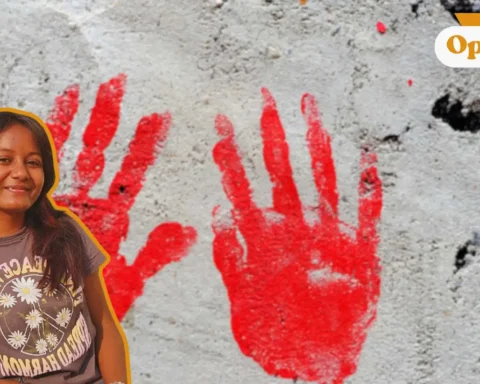The historical epic has been a staple of global cinema since the invention of the film. The art form has allowed audiences around the globe to revisit a time lesser known to them via the big screen. Films such as Kingdom of Heaven, The King and Braveheart are all considered classics to audiences and critics of Western cinema.
This phenomenon, however, is not restricted to the West, as film industries worldwide have used historical settings and stories as a backdrop for their films. These films, however, are not a historical account as creative liberties are taken. However, these liberties manifest themselves as the distortion of facts. As movies are more consumed than history books, they risk the danger of becoming popular belief (for example, many for a while believed Titanic to be a true story, while the ship did sink, Rose and Jack are yet to be proven real).
Whilst their embellishments might be fake, their consequences are very much real. In India, historical epics have slowly become a growing genre on the big screen. These films that depict heroes of time gone by would seem to have the same hallmarks of historical epics everywhere: grand battles, poetic dialogue and embellished facts. However, closer inspections reveal that there is more. This article will examine how Bollywood intentionally leverages religious tensions and revisionist history in the name of profit.
Profiting from Islamophobic Narratives
Bollywood producers intentionally leverage religious tensions, particularly Islamophobic narratives, to maximise profits. Films such as The Kashmir Files, The Kerala Story, and Tanhaji: The Unsung Warrior have generated significant box-office returns by casting Muslims as villains and Hindus as heroic victims. The success of these films highlights a clear trend where nationalist themes resonate strongly with audiences, particularly in regions with rising majoritarian sentiment.
State incentives further boost financial gains, with tax exemptions granted to films promoting Hindu-nationalist narratives. Tanhaji and Chhaava, for example, were made tax-free in BJP-ruled states, reducing production costs and increasing profit margins. These films also benefit from high levels of controversy and social-media outrage, which act as free marketing and drive audience interest.
In addition, these films attract premium licensing deals from streaming platforms and generate substantial revenue from merchandising as religious iconography becomes a sellable commodity. Political endorsements from figures like Prime Minister Modi further guarantee box-office success, ensuring that producers quickly recoup their investments.

Revisionist Narratives in Bollywood Blockbusters
Tanhaji: The Unsung Warrior (2020)
Tanhaji celebrates the Maratha commander Tanaji Malusare as a lone hero who defiantly repels Mughal forces at Sinhagad, reducing a negotiated surrender and multi-clan defence to an epic last stand. The film depicts Mughal soldiers as zealots rather than the multi-faith armies that historical records describe. It was made tax-free in Uttar Pradesh by Chief Minister Yogi Adityanath shortly after release, a move lauded by the lead actor Ajay Devgn and criticised by the opposition as overt political favouritism (New Indian Express).
Panipat (2019)
Panipat portrays the Third Battle of Panipat (1761) as a stark clash of civilisations, casting Ahmad Shah Abdali exclusively as a religiously driven invader. In reality, his campaigns involved shifting alliances with Indian rulers and were motivated by Afghan-Persian geopolitics (Journal of Asian Studies). Protests by Jat groups in Haryana and Rajasthan accused the film of defaming Maharaja Surajmal and demanded bans, pointing out that the ruler had sheltered Maratha soldiers rather than betraying them as the film suggests (Times of India).
Adipurush (2023)
Adipurush adapts the Ramayana into a spectacle of martial heroism, emphasising a warrior-king Rama and amplifying Ravana’s demonisation. Critics note that its modern slang, stylised violence and empty seats reserved in the halls for “Hanuman” mirror Hindutva mobilisation tactics, turning myth into contemporary political allegory (Time magazine). The Allahabad High Court even questioned how such depictions passed certification, observing that the portrayal of sacred characters tested the tolerance of Hindu sentiment (The Hindu).
Chhaava (2025)
Chhaava depicts the 17th-century conflict between Sambhaji and Aurangzeb in communal terms, presenting Mughal rule as unremitting tyranny. The film was praised by Prime Minister Narendra Modi, granted tax-free status in several BJP-ruled states and followed by attacks on Aurangzeb’s tomb in Maharashtra, illustrating its real-world impact on communal tensions (Washington Post). Legal threats over alleged historical inaccuracies and caste-based abuse of critics further reveal the charged political environment surrounding the film (The Economic Times).
The Kashmir Files (2022)
The Kashmir Files claims to depict the truth of the 1990 exodus of Kashmiri Pandits yet collapses fifteen years of conflict into a single family’s ordeal. Reviews describe it as propaganda aligned with the ruling party, demonising every Muslim as a perpetrator and every Hindu as a victim (Film Companion; The Indian Express). Its box-office success and tax exemptions in BJP-ruled states highlight how political endorsement amplifies its one-sided narrative (Reuters).
Political Pandering and Narrative Strategies
These films enjoy clear political patronage. Tanhaji’s tax-free status in Uttar Pradesh and demands by BJP leaders in Madhya Pradesh reflect state incentives tied to majoritarian themes (Hindustan Times; New Indian Express). Chhaava’s endorsement by Prime Minister Modi and the subsequent communal violence underscores how cinematic narratives become tools of Hindutva mobilisation (Washington Post). The Diplomat has argued that tax exemptions and high-profile political endorsements form part of a broader strategy to use Bollywood as a soft-power vehicle for Hindu nationalist messaging (The Diplomat).
Narratively, these films rely on monolithic villains and heroic saviours. Muslim rulers are uniformly portrayed as oppressors, and Hindu protagonists are paragons of virtue. Pluralistic traditions, Sufi-Bhakti syncretism, and inter-faith alliances are erased. Dramatic licence becomes partisan distortion when entire communities are reduced to antagonists and complex political contexts are omitted.
Social Consequences and Pathways to Reclaim Complexity
When state institutions endorse such one-sided histories, public trust in education and governance suffers. Surveys after Tanhaji showed viewers believed medieval India was defined by perpetual Hindu-Muslim conflict, reducing support for pluralistic values (Centre for the Study of Developing Societies). The Kashmir Files and Chhaava have been linked to spikes in anti-Muslim sentiment and violence, with film scenes repurposed at communal rallies (Washington Post). Simplified narratives normalise discrimination and weaken critical inquiry, leaving audiences vulnerable to propaganda.
To reclaim complexity, India needs truly independent history councils comprising scholars, judges and civil society representatives to review and approve historical films through transparent, peer-reviewed processes, as recommended by the Indian History Congress.
Curricula should include elective modules for analysing primary sources—inscriptions, letters and oral testimonies—and debating contested events. Public history initiatives such as community museums, digital archives of Dalit and Adivasi memoirs and travelling exhibitions can bring marginalised voices into mainstream view (Sahapedia). Media literacy education must teach citizens to assess the provenance of online content and distinguish peer-reviewed research from cinematic myth, a need demonstrated by MediaWatch India’s workshops on historical misinformation.

Conclusion
Bollywood’s recent turn towards Hindu-patriotic historical epics reflects deeper political currents. While popular cinema can spark interest in the past, these blockbusters often cross into partisan revisionism that erases struggle, entrenches privilege and inflames communal tensions. By demanding independent scholarly oversight, contextual companion content and robust media literacy, filmmakers and civil society can ensure that popular history entertains without endangering the integrity of the past. Only through engagement with nuance and multiple perspectives can India’s film industry honour the country’s plural heritage and contribute to a more inclusive national identity.
Let us know your thoughts in the comments below. If you have burning thoughts or opinions to express, please feel free to reach out to us at larra@globalindiannetwork.com.









